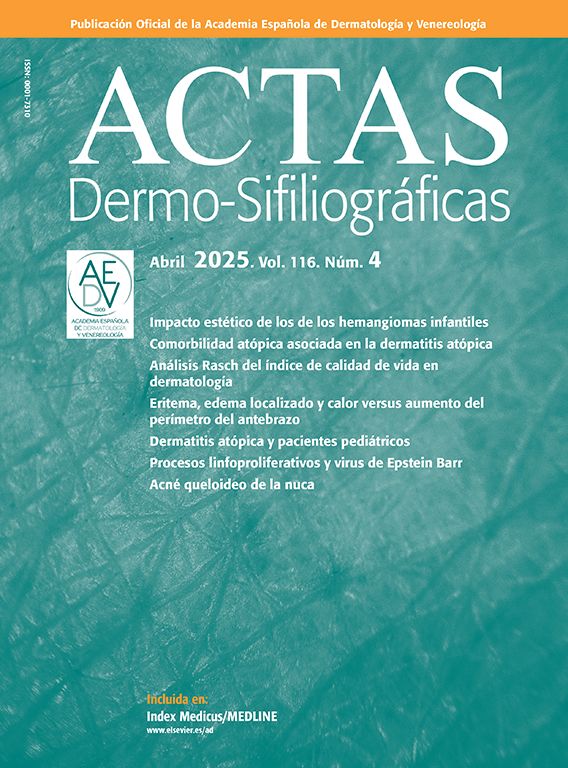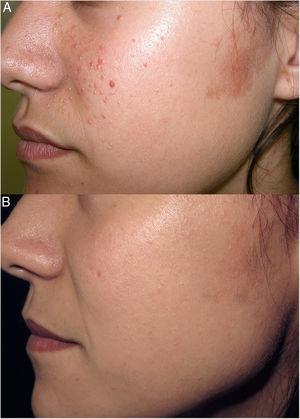A 45-year-old man, with no relevant past medical history consulted for an asymptomatic lesion on his back of indeterminate history, which he noticed 1 month earlier due to occasional bleeding (Fig. 1).
The physical examination confirmed the presence of a 1cm in diameter pink, well-demarcated, friable, and partially eroded tumor nodule located in the left scapular area (Fig. 2).
What is your diagnosis?
CommentaryThe dermoscopic image of the lesion revealed a rainbow pattern in the upper region, red-white areas and hemorrhagic zones in the central part, and small areas formed by bluish-gray ovoid nests on the right lateral margin (Fig. 3).
Given the lesion progression timeframe and dermoscopic findings, the following diagnoses were considered: amelanotic melanoma, Merkel cell tumor, atypical fibroxanthoma, pyogenic granuloma, squamous cell carcinoma, or basal cell carcinoma (BCC).
Histopathological analysis of the sample provided a definitive diagnosis of macronodular basal cell carcinoma (BCC).
The rainbow pattern was initially described in Kaposi's sarcoma lesions.1 Subsequently, it has also been noted in other tumors such as atypical fibroxanthoma, pseudolymphoma, hemosiderotic dermatofibroma, blue nevus, and BCC.2 This pattern likely results from a phenomenon related to luminescence and the interaction of light with the superficial and/or deep structural components of a lesion. Each polarization state undergoes variable absorption and refraction delay, resulting in a unique combination of colors for each lesion. However, further studies are still needed to understand the underlying optics of this phenomenon and evaluate its potential diagnostic relevance.3
In the case of BCC, a study on the dermoscopic variability of BCC based on clinical type and tumor location found the rainbow pattern in 5% of the 501 BCCs analyzed, mostly associated with nodular BCC.4 Additionally, an Indian cohort that analyzed the relationship between dermoscopic patterns and the clinical or histopathological subtype of BCC in patients with phototypes IV–VI, this pattern was reported in a higher percentage – up to 24% of the 143 BCCs analyzed, with an increased frequency of 34% in the nodular BCC subgroup.5
Although its prognostic value is still uncertain, a recent study indicated that this pattern was a dermoscopic sign found exclusively in tumors unresponsive to imiquimod.6
Conflicts of interestNone declared.











